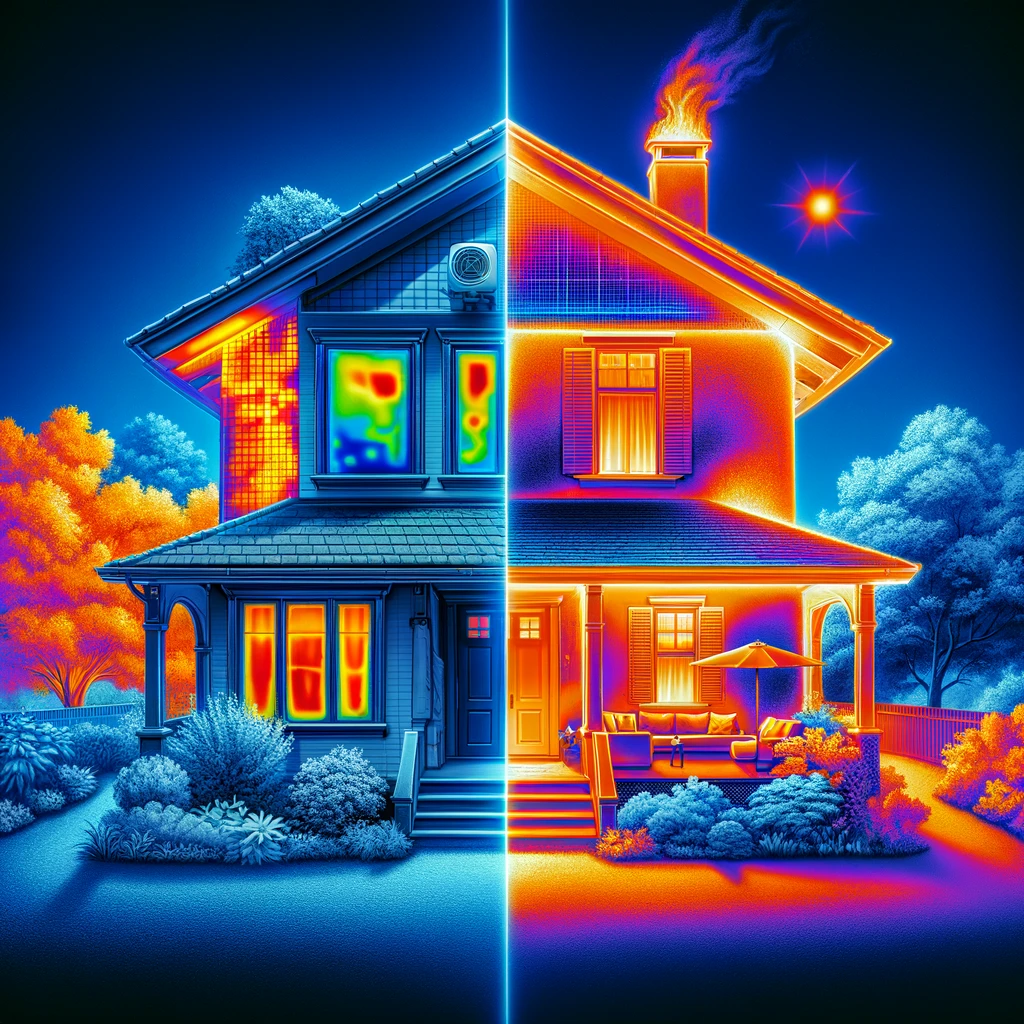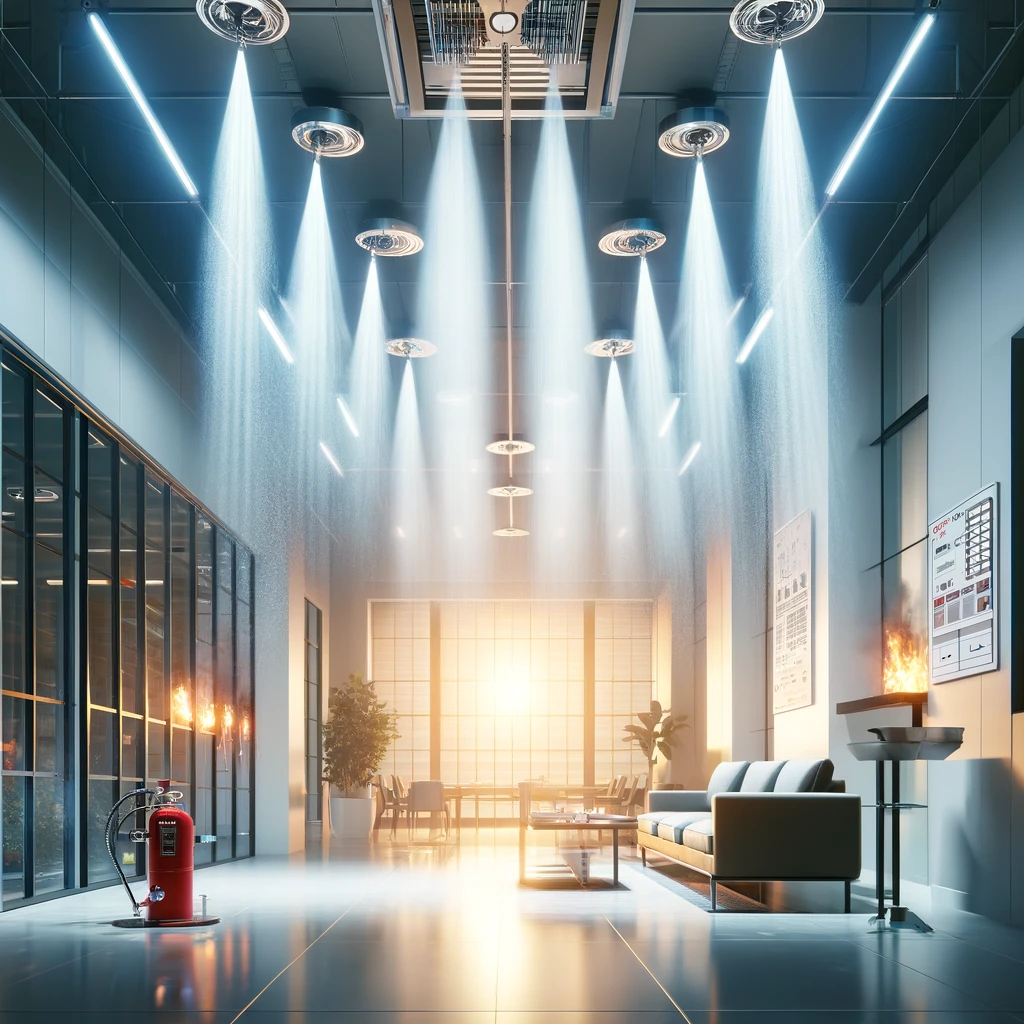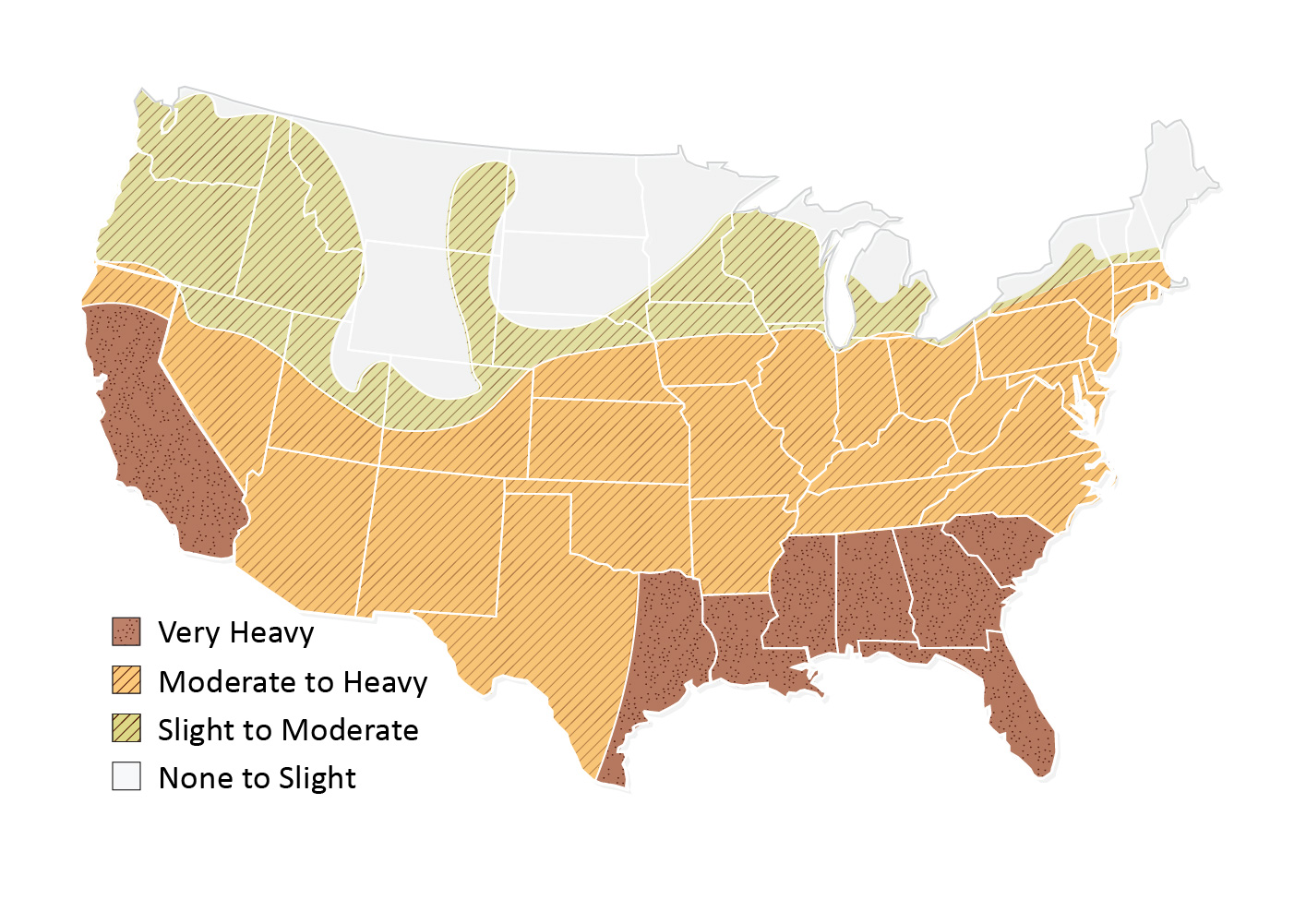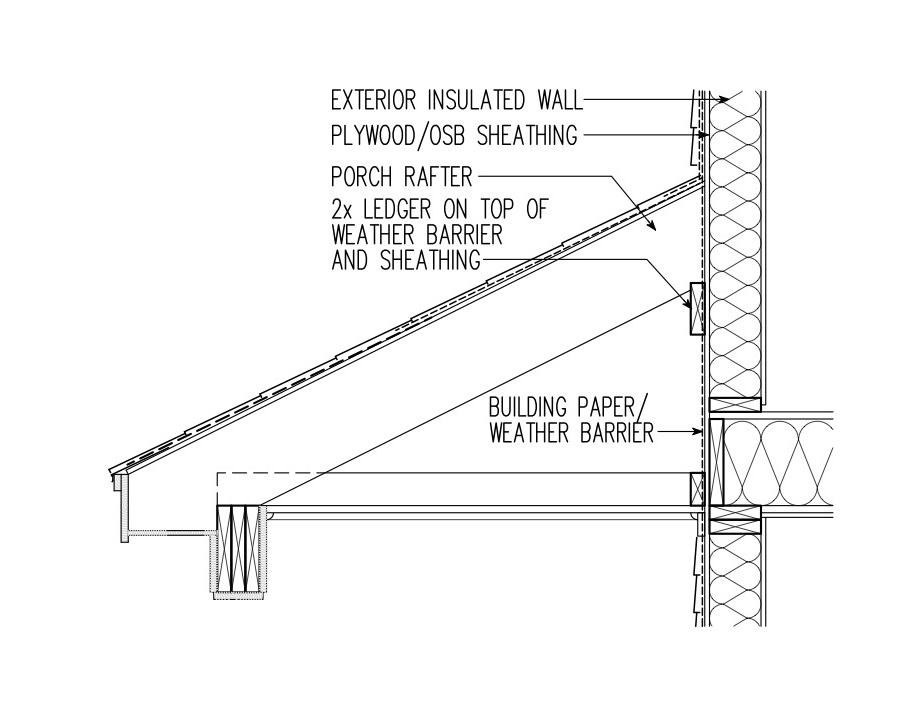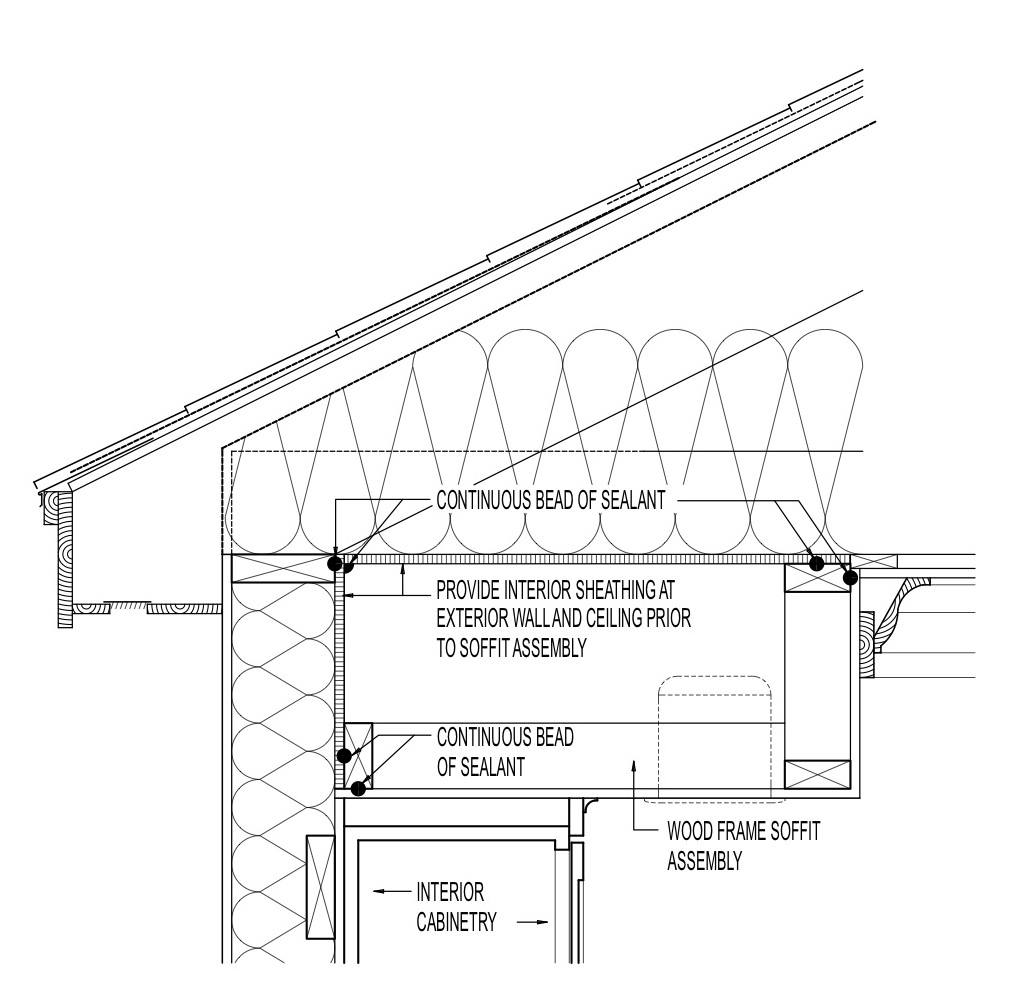Scope:
- To minimize health and comfort effects related to extreme heat events, create a “cool room” or space within the home to shelter from extreme heat.
- Select a room that can be closed off from the rest of the home, has minimal heat gain through windows, walls, or ceilings, and is large enough to shelter the home’s occupants during a heat wave.
- Use shading, low solar heat gain coefficient windows, and other solar control techniques to reduce solar heat gain to the room.
- Use insulation and air sealing to minimize heat gain through the walls and ceilings.
- Limit electrical loads and other internal sources of heat within the space.
- Provide a dedicated emergency cooling source.
- Provide emergency refrigeration (located outside the room) for food and medications.
- Provide backup power sufficient to serve emergency cooling and refrigeration loads.
Given the reality of global climate change and the increasing likelihood of extreme heat events, designing and retrofitting homes for resistance to extreme heat and power outages should be considered in all climates. Extending the “hours of safety” that a home can provide when air-conditioning is not available can be life-saving. However, it is not necessary for an entire home to be resistant to extreme heat. Instead, the design or retrofit can concentrate on just one room, known as a “cool room.”
A cool room is a designated area in a home or dwelling that is designed to provide protection for occupants during extreme heat events. The room should intrinsically resist overheating while providing a relatively comfortable place to take refuge during the day and/or to sleep at night. It should have low enough heat gains that it can be cooled by a small emergency cooling system. Ideally, the room will be served by a backup power system sufficient to power the emergency cooling system and any vital refrigeration equipment. Cool rooms can be included in new construction or created in existing homes as a retrofit.
Where to Locate the Cool Room:
- The cool room should be located on the north or northeast side of the home to minimize solar heat gain. Avoid unshaded south, east, or west sides of the home unless well-shaded by exterior elements.
- Windowless basements and interior rooms are options for locating the cool room, but they may require effective ventilation and access to natural light.
- Landscaping can provide shading and localized cooling for the cool room.
Protecting the Cool Room from External Heat Gain:
- Use exterior and/or interior window treatments for shading.
- Specify windows with a low solar heat gain coefficient (SHGC) for new construction or window upgrades.
- Use light-colored exterior walls to reduce absorption of solar heat.
- Limit window area in the cool room.
- Consider insulating the exterior walls to at least local code levels or higher.
- Use exterior shading devices such as shutters, overhangs, or awnings.
- Install low solar heat gain coefficient windows or window films.
Avoiding Internal Waste Heat:
- Do not place large appliances or electronics that generate excess heat in the cool room.
- Use energy-efficient lighting.
- Turn off unused appliances and computers.
Actions and Habits to Help Stay Cool:
- Avoid cooking indoors as much as possible.
- Cook at night or outside on a grill to keep heat out of the cool room.
- Turn off unused appliances and computers.
- Eliminate incandescent lighting.
- Drink cool beverages that have been refrigerated outside the cool room.
- Wear lightweight clothing.
- Limit physical activity.
Additional Considerations for a Cool Room:
- Include an attached bathroom with an efficient exhaust fan.
- Provide furniture for multiple occupants.
- Consider portable cots or hammocks for sleeping or resting.
- Analyze the power consumption of items in the cool room to conserve energy.
- Ensure good ventilation options.
Cooling Systems for Cool Rooms:
- Consider plug-in or hard-wired fans for personal cooling.
- Battery-powered fans can be used for cooling in rooms without backup power.
- Evaporative coolers are an option in dry climates.
- Mechanical air conditioning, such as window units or mini-split heat pumps, may be necessary in non-arid locations.
How to Create a Cool Room:
- Choose the location of the cool room with consideration for shading and insulation.
- Design the room with proper insulation, exterior shading, and window treatments.
- Avoid internal heat sources in the cool room.
- Provide comfortable sleeping arrangements.
- Ensure backup power and cooling systems are in place.
Compliance with Codes and Standards
IRC 2021
Building Planning (Chapter 3)
- Ensure compliance with the following sections:
- Section R328: Energy Storage Systems
- Section R329: Stationary Engine Generators
- Section R330: Stationary Fuel Cell Power Systems
Energy Efficiency (Chapter 11)
- Pay attention to the following sections:
- Section N1102: Building Thermal Envelope
- Section N1103: Systems
- Section N1104: Electrical Power and Lighting Systems
- Section N1110: Additions
- Section N1111: Alterations
Heating and Cooling Equipment (Chapter 14)
- Ensure compliance with these sections:
- Section M1403: Heat Pump Equipment
- Section M1404: Refrigeration Cooling Equipment
- Section M1411: Heating and Cooling Equipment
- Section M1413: Evaporative Cooling Equipment
IRC 2018
Building Planning (Chapter 3)
- Ensure compliance with:
- Section R327: Stationary Storage Battery Systems
Energy Efficiency (Chapter 11)
- Pay attention to:
- Section N1102: Building Thermal Envelope
- Section N1103: Systems
- Section N1104: Electrical Power and Lighting Systems
- Section N1108: Additions
- Section N1109: Alterations
Heating and Cooling Equipment (Chapter 14)
- Ensure compliance with these sections:
- Section M1403: Heat Pump Equipment
- Section M1404: Refrigeration Cooling Equipment
- Section M1411: Heating and Cooling Equipment
- Section M1413: Evaporative Cooling Equipment
IRC 2015
Energy Efficiency (Chapter 11)
- Pay attention to:
- Section N1102: Building Thermal Envelope
- Section N1103: Systems
- Section N1104: Electrical Power and Lighting Systems
- Section N1108: Additions
- Section N1109: Alterations
Heating and Cooling Equipment (Chapter 14)
- Ensure compliance with these sections:
- Section M1403: Heat Pump Equipment
- Section M1404: Refrigeration Cooling Equipment
- Section M1411: Heating and Cooling Equipment
- Section M1413: Evaporative Cooling Equipment
IRC 2012
Energy Efficiency (Chapter 11)
- Pay attention to:
- Section N1102: Building Thermal Envelope
- Section N1103: Systems
- Section N1104: Electrical Power and Lighting Systems
Heating and Cooling Equipment (Chapter 14)
- Ensure compliance with these sections:
- Section M1403: Heat Pump Equipment
- Section M1404: Refrigeration Cooling Equipment
- Section M1411: Heating and Cooling Equipment
- Section M1413: Evaporative Cooling Equipment
IRC 2009
Energy Efficiency (Chapter 11)
- Pay attention to:
- Section N1102: Building Thermal Envelope
- Section N1103: Systems
- Section N1104: Lighting Systems
Heating and Cooling Equipment (Chapter 14)
- Ensure compliance with these sections:
- Section M1403: Heat Pump Equipment
- Section M1404: Refrigeration Cooling Equipment
- Section M1411: Heating and Cooling Equipment
- Section M1413: Evaporative Cooling Equipment
Creating a cool room can be a cost-effective and sensible approach to protecting occupants during extreme heat events, especially in homes without air conditioning or full-home backup power. It requires thoughtful design and careful consideration of location, insulation, and cooling systems.
For immediate service or consultation, you may contact us at Allied Emergency Services, INC.
Contact Information:
- Phone: 1-800-792-0212
- Email: Info@AlliedEmergencyServices.com
- Location: Serving Illinois, Wisconsin, and Indiana with a focus on the greater Chicago area.
If you require immediate assistance or have specific questions, our human support is readily available to help you.
Disclaimer: This article is intended for informational purposes only. For professional advice, consult experts in the field.






